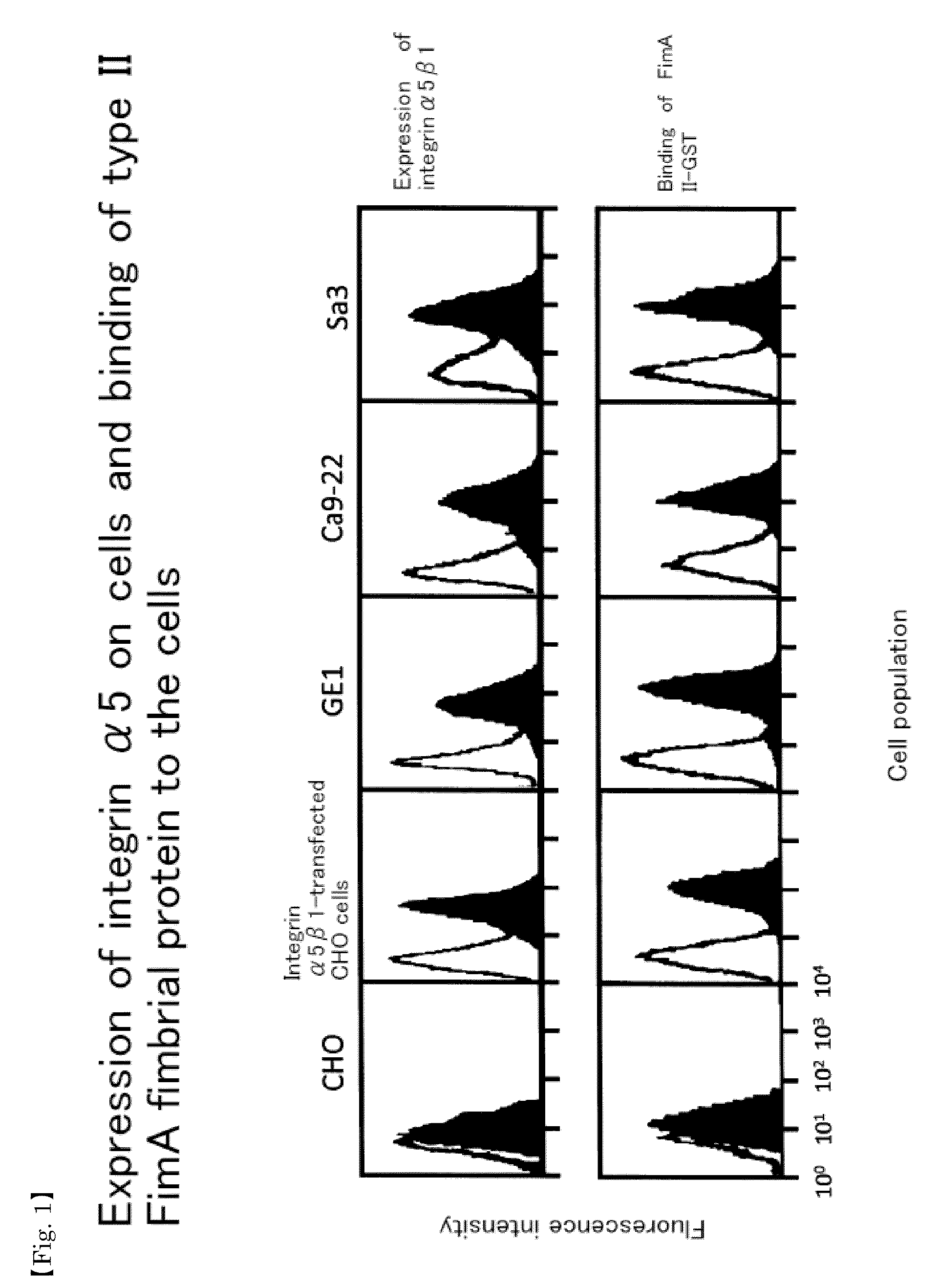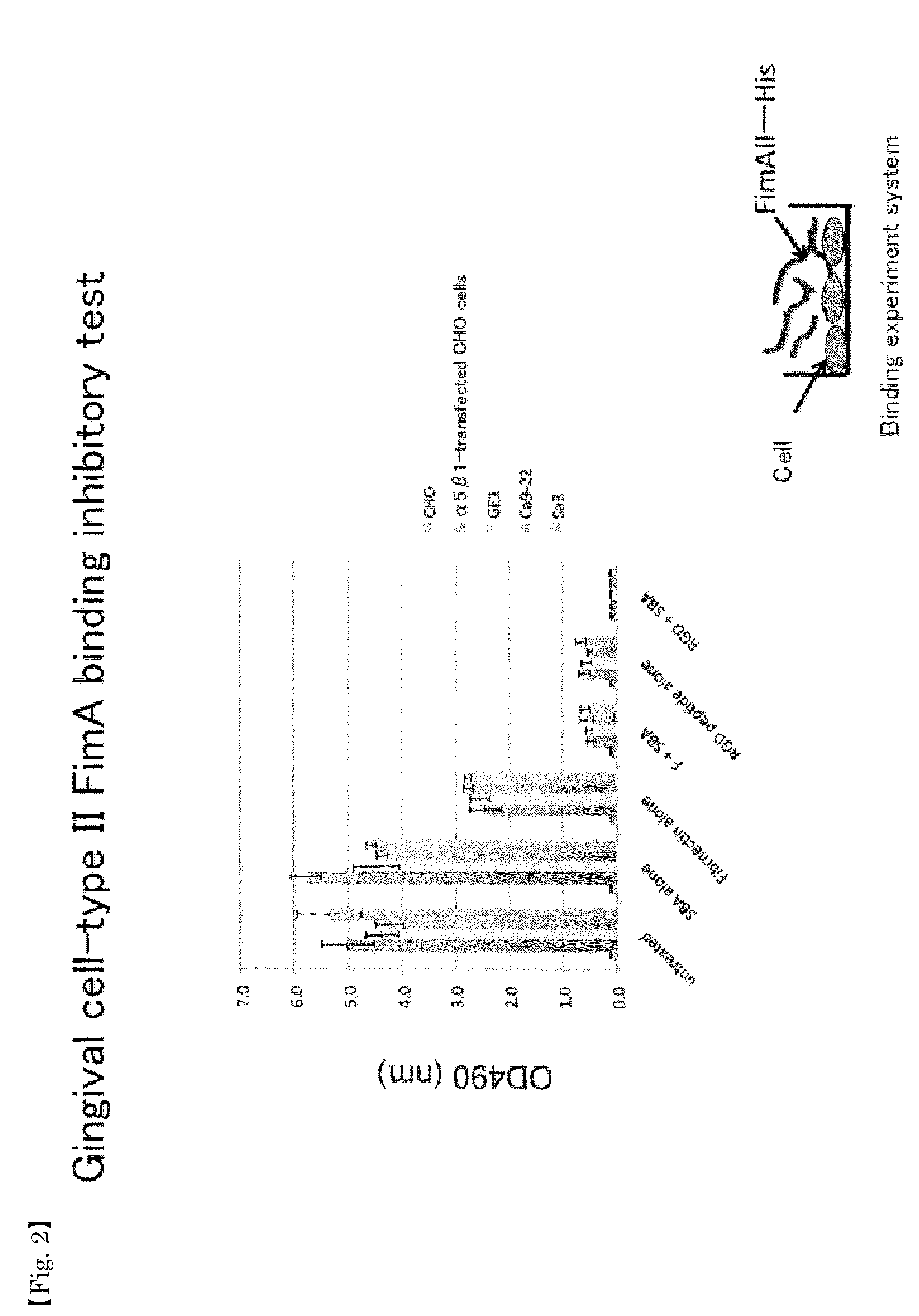Agent for preventing periodontal disease
a periodontal disease and agent technology, applied in the field of pharmaceutical agents, can solve the problems of difficult to remove p. gingivalis, difficult to retain a pharmaceutical agent, and high infection rate of infected persons, and achieve the effects of potent inhibition of p, high retentivity, and inhibiting binding
- Summary
- Abstract
- Description
- Claims
- Application Information
AI Technical Summary
Benefits of technology
Problems solved by technology
Method used
Image
Examples
experiment 3
[0120]6. Binding Inhibitory Experiment 3
[0121]Test cells were seeded into a 96-well plate in an amount of 5×105 cells. The next day, 10 μl of P. gingivalis carrying FimA type II fimbrial protein was allowed to bind, and 30 μl each of SBA beads, RGD peptide−SBA beads, and fibronectin−SBA beads were added. The plate was shaken at room temperature for 10 minutes.
[0122]The 96-well plate was gently washed. Fluorescently labeled P. gingivalis carrying type II FimA fimbrial protein bound to the cells was detected using a fluorescence detector. P. gingivalis was fluorescently labeled by using an FITC Labeling Kit (manufactured by Kirkegaard & Perry Laboratories, Inc.) after P. gingivalis was immobilized with formalin.
[0123]FIG. 4 shows the results.
[0124]The results of FIG. 4 show that RGD peptide−SBA beads and fibronectin−SBA beads inhibited binding of P. gingivalis carrying type II FimA fimbrial protein to gingival cells.
[0125]Compared to SBA beads, RGD peptide−SBA beads and fibronectin−SB...
PUM
| Property | Measurement | Unit |
|---|---|---|
| molar ratio | aaaaa | aaaaa |
| concentration | aaaaa | aaaaa |
| molar ratio | aaaaa | aaaaa |
Abstract
Description
Claims
Application Information
 Login to View More
Login to View More - R&D
- Intellectual Property
- Life Sciences
- Materials
- Tech Scout
- Unparalleled Data Quality
- Higher Quality Content
- 60% Fewer Hallucinations
Browse by: Latest US Patents, China's latest patents, Technical Efficacy Thesaurus, Application Domain, Technology Topic, Popular Technical Reports.
© 2025 PatSnap. All rights reserved.Legal|Privacy policy|Modern Slavery Act Transparency Statement|Sitemap|About US| Contact US: help@patsnap.com



